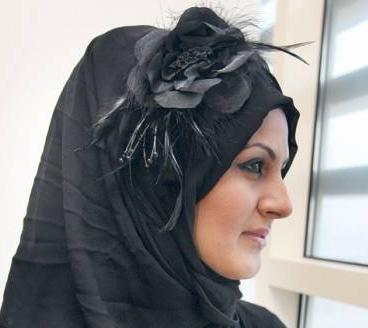Rakib Altaf
SRINAGAR, June 4: In the nineties, when the Ultra-Islamic group Dukhtaran-e-Millat (daughters of the nation) tried to enforce a Purdah rule in Kashmir, they simply failed. The Kashmiri women were just reluctant to accept their diktat.
Now almost two decades later, the trend of the purdah has been rising, mostly among college girls and working young ladies who adopt the Abayaa or a long cloak-like dress that covers the entire body from head to toe, purely out of choice.
But no sooner had they started to wear the dress than they shunned a traditional monotonous black cloak for something trendier.
Khalid Bakshi’s shop near the city centre Lalchowk showcases long abayaas-blue, brown, green, yellow-laced with pearls and embroidered on the cuffs- and has a roaring business. “This is what young women prefer to wear nowadays. It is the fashion here now,” Bakshi says.
The rising inclination of Kashmiri female youth towards the Islamic dress is attributed by many to a growing awareness about Islam through sermons and lectures on television and other media. And Rehana Tabasum, a thirty-year-old bank employee, says the attire had to undergo a change so that Muslim women like her kept pace with the fast modernising society.
“You see, my clients at the bank are often women who wear modern dresses, designer Kurtis and Shalwar Kameez. I never wanted to wear the old black Abayaa fearing they might look down at me. I was like, God, I will be an outcast,” she says.
“When I saw somebody had worn this beautiful peach abaaya, I just jumped to buy one the same evening. It is a green, pearl-laced one. Now I also have a paisley embroidered Abayaa and I wear a different colour every two days,” Tabasum says.
Muslim women wear hijab because a head to toe covering has been prescribed for them in their Holy book-The Quran- to avoid being gazed upon by stranger men. “But isn’t the attractive hijab sure to gain more attention instead,” asks Shabeena Baba, who says she always wanted to wear the hijab but for the latest trends that have set in.
“It is all the same if you wear the modernised Abayaa or not. People are going to stare at you either ways.” For Baba, the innovation with the dress has only “killed” the purpose for it to be worn.
“No,” says Farhat Anjum, a 25-year-old school teacher from downtown Srinagar. “Allah wants us to be covered so that we are safe from the dirty gaze of men. Did he ever say that He wants us to look ugly, did he?”
“And we are covered so we are not doing anything that is not permissible for us. The other things don’t matter,” she says.
Trendy women donning such abayaas and satin headscarves are becoming a common sight at least in the capital Srinagar which is the Hub of corporate offices and educational activity. But now, even the colourful Abaaya may soon be a thing of the past.
In their efforts to keep the trend changing, many others are now seen wearing a ‘Chadar Abaya’ instead. These are soft flowing long pieces of cloth, open at the front and made in the form of a semi-circle which makes them look more like the Middle Eastern women.
“I mean what is the harm if we are trying something new. We are not slaves. What we want is to follow our religion. And as long it is permissible we can try anything right?” asks Ruhi Jehan, a University Student.
Jehan denies that the fast innovative abayaas or hijab are more of a fashion statement for beauty than a religious duty. For her and others, who have accepted the modern version of the Purdah, it does not pull crowds.
“Okay now you say wearing abaaya makes us the most attractive on the street and grabs attention? Then film actors like Kareena Kapoor would have tried it,” she says.










